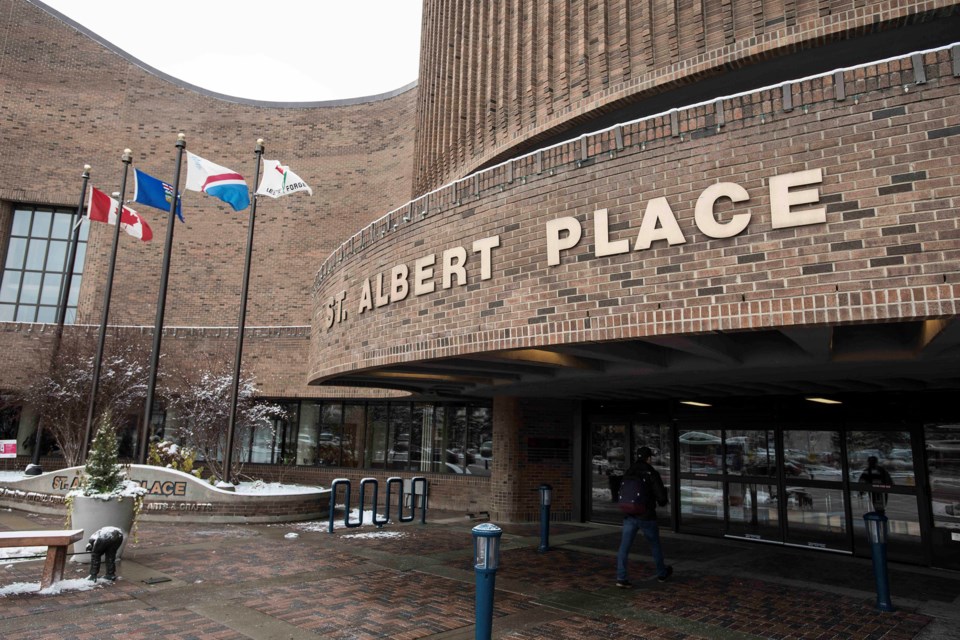The financial outlook for the City of St. Albert is less hair-raising than originally thought, according to the latest financial forecast.
Instead of facing a total estimated impact of $14.4 million from the COVID-19 pandemic, the city has whittled that amount down to a $500,000 deficit through cost-saving measures and cautious spending.
Several initiatives were used to offset the deficit by $13.9 million, including the temporary layoff of casual and permanent staff, reduced turf maintenance, elimination of budgeted staff increases, and the cancellation of some operating projects and grant programs.
Council allocated a total of $2.4 million from the city’s stabilization reserve to act as an additional buffer, but with a $500,000 forecasted deficit, the full amount likely won’t be needed, said Diane McMordie, director of finance, in a presentation to council Aug. 17.
"The actual impact of this event is $14.4 million dollars, which is astronomical. The fact that council was supportive of all the work administration was trying to do to save costs and take financial management seriously really paid off," McMordie said. "I feel like I actually got to deliver a good news story this time."
Mayor Cathy Heron said this report was one she was “scared to open,” but it seems city efforts to curb the deficit have been effective so far.
That original $14.4-million shortfall was comprised of several unexpected budget costs to the city amid the pandemic.
The city’s recreation department was hardest hit with a $5.4-million revenue shortfall. With reductions in ridership and ticket sales, St. Albert Transit reported a $2.7-million impact. The city’s COVID-19 response costs totalled $1.7 million. The city’s culture department took a $900,000 hit.
The second-largest impact, totalling $3.7 million, was made up of a variety of other program areas that weren’t directly impacted by closures but were still seeing revenue shortfalls, like lower than expected permitting fees, McMordie explained.
“It just incorporates other revenue sources that weren’t included in the past,” she said.
These forecasts also include additional revenue losses from the cancellation of fees and reduced activity, as well as savings realized as a result of most city staff working from home.
Facility use
The community response to facilities reopening has been "pretty conservative" over the last few weeks, said Diane Enger, recreation facility director, but that's in line with the city's expectations.
Over 1,000 people have been to the Woodlands Waterpark, and more than 600 memberships have been reactivated at Servus Place to date with 2,500 people using the fitness centre, Enger said.
In the two weeks since reopening, 1,300 people have been to Fountain Park Pool and 31 members have reenacted memberships. Enger also noted there will be more swim lessons and extended hours in the fall at Fountain Park, and the Landrex Water Play Centre is expected to open Sept. 1.
The three arenas at Servus Place have seen "strong bookings" so far as well, she said.
"It is early days, but we are in line with what we have projected," she said. "We're not projecting to get back to pre-COVID numbers for at least until next spring ... but we do find our numbers will increase in the fall."
Lingering impacts
No details are yet available as to when economic stimulus funds promised by the federal and provincial governments would flow through to municipalities, McMordie said. That money could be used to help cover the deficit.
While the city got some good news on its financial health on Monday, there are still many unknowns that could still result in a deeper deficit by year’s end. Unlike provincial and federal governments, municipalities cannot budget for a deficit by law.
The city has managed to keep residents relatively shielded from additional costs up until this point, but that could change next year.
"It's reasonable to assume that there will continue to be lingering impacts into the 2021 fiscal year and potentially longer," McMordie said.
Increased user fees, tax increases, and modification to services and service levels are all on the table as ways to mitigate future forecasted deficits.
The city would also consider new revenue opportunities, transfers from reserves, and potential grants from other levels of government as ways to mitigate future shortfalls.




